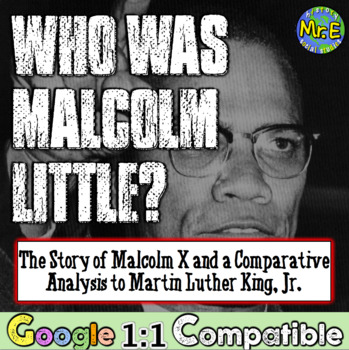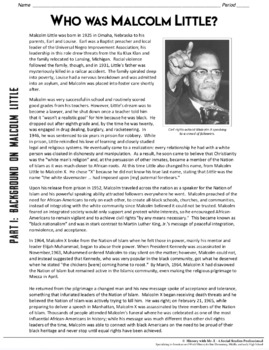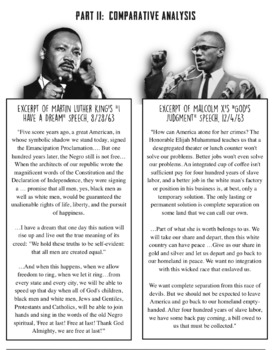Who was Malcolm Little? A Malcolm X Analysis and Martin Luther King Comparison!
- Zip
- Google Apps™

What educators are saying
Description
Who was Malcolm Little? A Malcolm X Analysis and Martin Luther King Comparison!
This top-notch resource is included in the Civil Rights Movement Unit Bundle!
In this highly-engaging resource, students understand the life, background, and history of Malcolm Little (Malcolm X) and his contributions to the Civil Rights Movement. In part one of this activity, students analyze a one-page article on life and contributions of Malcolm Little, his conversion to Islam and subsequent name change to Malcolm X, his role in the Nation of Islam and stance in the Civil Rights Movement. In part two, students complete a compare and contrast activity between Malcolm X and Dr. Martin Luther King Jr. Students analyze excerpts from both leaders to understand the different paths both advocated for in the Civil Rights Movement. In part three, students complete a short writing assignment that focuses on the achievements of both men.
A full teacher key and a Google 1:1 version are included!





